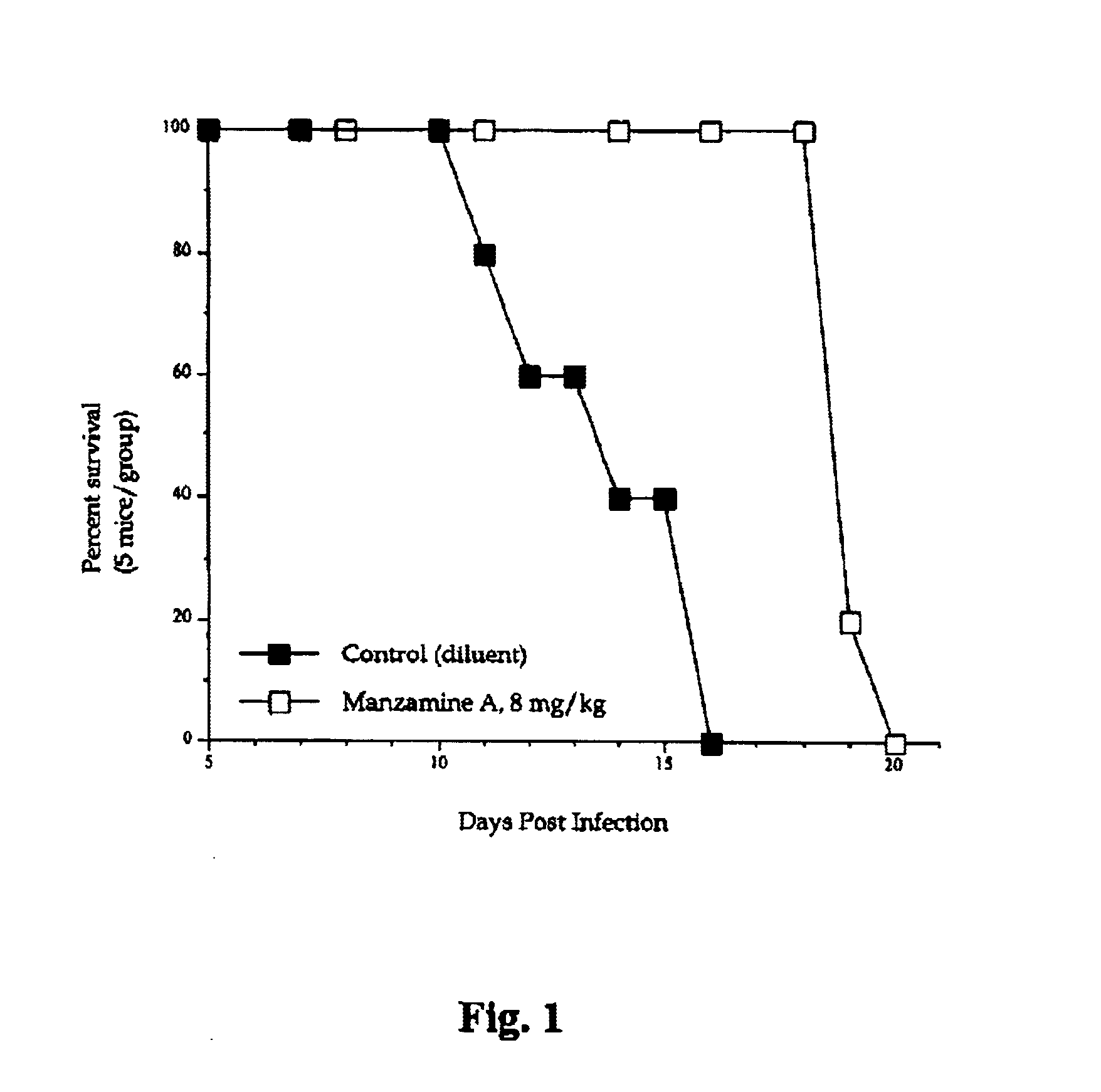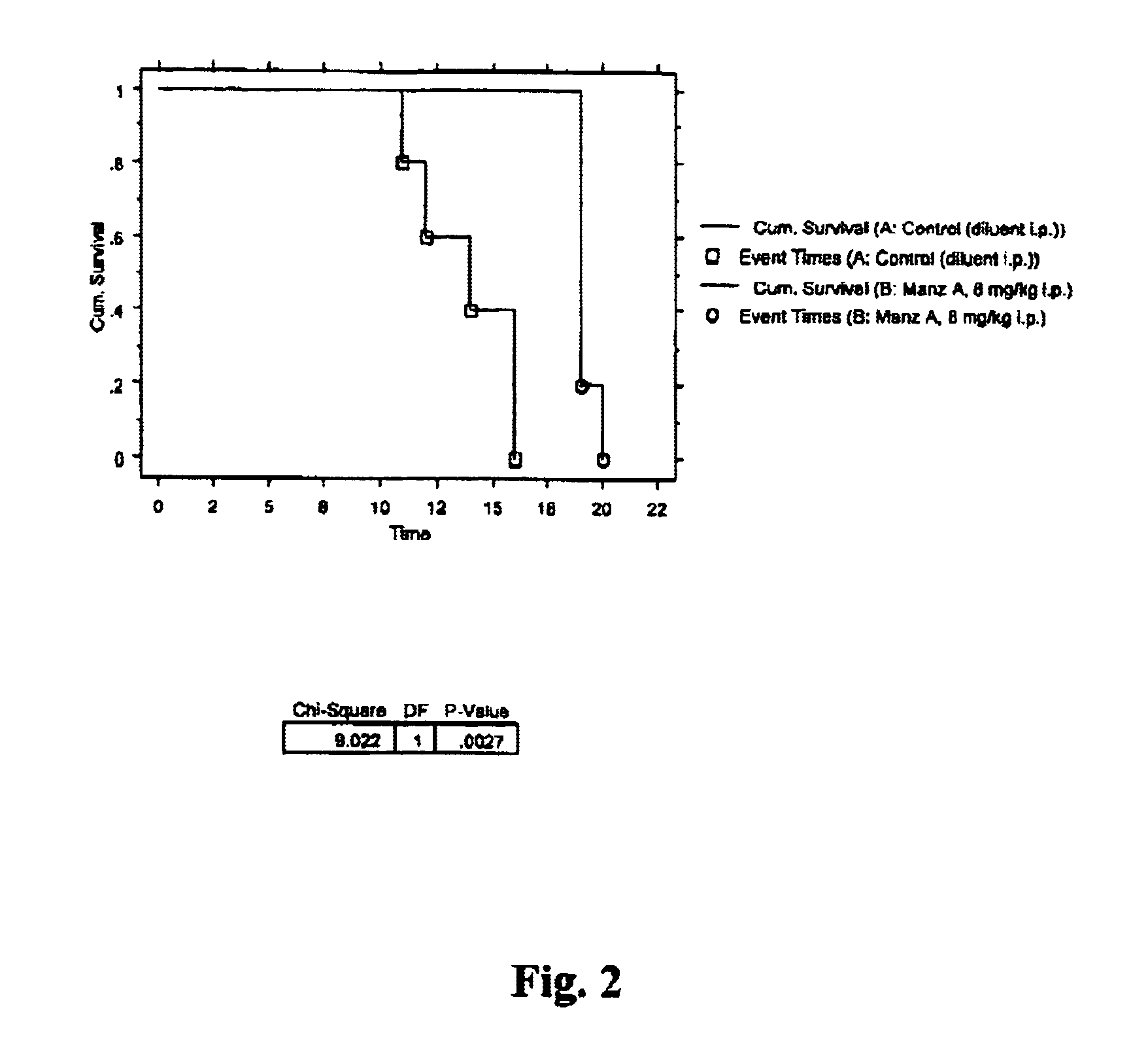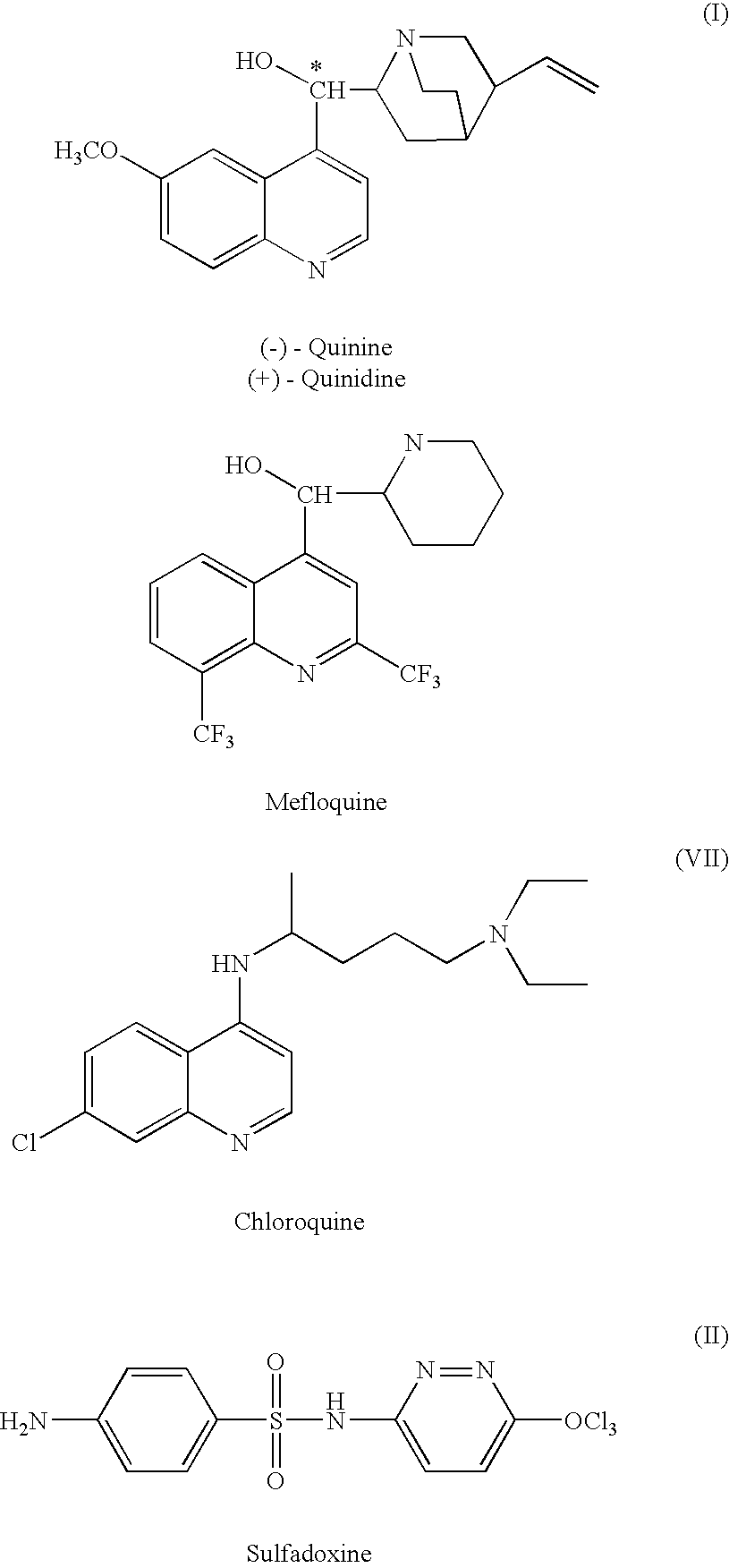Manzamines for treatment of drug resistant infection
a technology of drug resistant infection and manzamine, which is applied in the direction of antibacterial agents, drug compositions, antiparasitic agents, etc., can solve the problems of increasing the mortality rate associated with infectious diseases, increasing the risk of i>p. falciparum /i>, and symptomatic, etc., to achieve the effect of improving the bioactivity, reducing the risk of infection, and improving the bioactivity
- Summary
- Abstract
- Description
- Claims
- Application Information
AI Technical Summary
Benefits of technology
Problems solved by technology
Method used
Image
Examples
Embodiment Construction
[0037]The manzamines are complex, polycyclic, marine-derived alkaloids first reported by Higa and coworkers in 1986 from the Okinawan sponge genus Haliclona. See, Sakai, R.; Higa, T.; Jefford, C. W.; Bernardinelli, G. “Manzamine A; An Antitumor Alkaloid From a Sponge,”J. Am. Chem. Soc. 1986, 108, 6404-6405. These compounds possess a fused and bridged tetra- or pentacyclic ring system that is attached to a β-carboline moiety. Since the first report of manzamine A, an additional thirty manzamine-type alkaloids have been reported from the sponge genera Prianos, (see, Ohtani, I. I.; Ichiba, T.; Isobe, M.; Kelly-Borges, M.; Scheuer, P. J. “Kauluamine: An Unprecedented Manzamine Dimer from an Indonesian Marine Sponge, Prianos sp. J. Am. Chem. Soc. 1995, 117, 10743-10744), Haliclona, (see, Sakai, R.; Kohmoto, S.; Higa, T.; Jefford, C. W.; Bernardinelli, G. “Manzamines B & C, Alkaloids From a Sponge, Haliclona sp. Tetrahedron Lett. 1987, 28, 5493-5496; Higa, T.; Sakai, R.; Kohomoto, S.; Lui...
PUM
| Property | Measurement | Unit |
|---|---|---|
| diameter | aaaaa | aaaaa |
| diameter | aaaaa | aaaaa |
| diameter | aaaaa | aaaaa |
Abstract
Description
Claims
Application Information
 Login to View More
Login to View More - R&D
- Intellectual Property
- Life Sciences
- Materials
- Tech Scout
- Unparalleled Data Quality
- Higher Quality Content
- 60% Fewer Hallucinations
Browse by: Latest US Patents, China's latest patents, Technical Efficacy Thesaurus, Application Domain, Technology Topic, Popular Technical Reports.
© 2025 PatSnap. All rights reserved.Legal|Privacy policy|Modern Slavery Act Transparency Statement|Sitemap|About US| Contact US: help@patsnap.com



